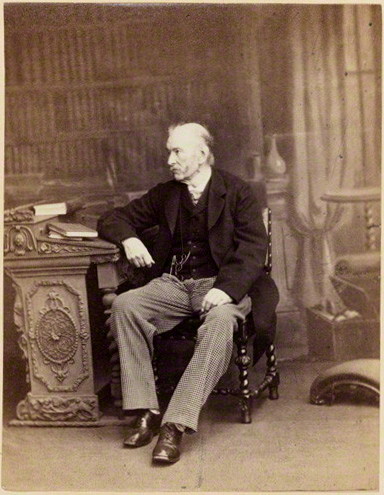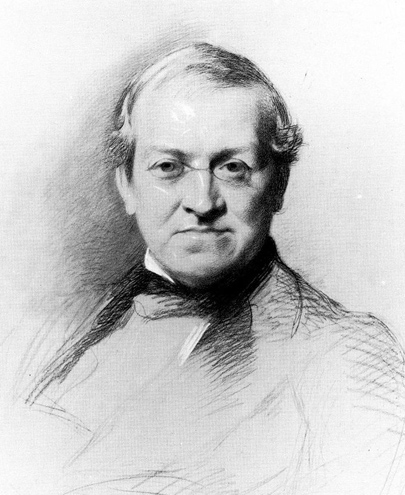 Practical Electronics
Projects By Mike, K4ICY Practical Electronics
Projects By Mike, K4ICY
Weekend
Radio Click
Here for More Electronics Projects and
Tutorials By
Mike Maynard, K4ICY
.
Building
Bridges - Yes you can! And
find values of mystery capacitors – with your multimeter
.
Originally published in The
Printed Circuit, Newsletter of the Tallahassee Amateur
Radio Society, August 2013, page 14
[VISIT HERE]
Edited/Updated December 2023
.
The
Wheatstone Bridge
It’s hard
to fathom – the Wheatstone Bridge circuit has been around for nearly
two centuries! Invented by Samuel Hunter Christie in 1833 and
improved and popularized by Sir Charles Wheatstone in 1843 [Wiki and citations,] the
Wheatstone Bridge and other related configurations are the most
fundamental electronics testing applications, still even used
today. The bridge is basically a ring of components
configured so that each leg (generally two,) of the circuit
will electrically balance out each other under test. Once
balanced, a measuring device such as a voltmeter can help identify an
unknown resistance integrated within the bridge setup.
Measurements made by a bridge can be extremely accurate and
bridge design variations can be used to also find capacitance,
inductance, impedance, and reactance among other quantities.
.
 ... ...
Referencing the diagram shown [BELOW],
the circuit is made up for four resistances: R1-R4. The
“Generator,” (a battery,) is connected across the two outside points of
the ring and the “Detector” (a voltmeter) is connected across the
remaining points of the ring which are the mid-point connections of
each “leg” of the bridge; each composed of R1-R2 and R3-R4.
When proper resistances are used within the bridge, no
current will flow through the meter and the bridge is said to be
“balanced.” For all other combinations of resistances the
meter will receive some current and thus deflect to indicate an
imbalance within the bridge.
.
.
Of the two legs of the bridge,
R1 and R2 are a known and fixed value. R3 is called the
“Control,” and a variable resistance, implemented by a potentiometer,
is used to find the balance point. R4 is the unknown
component under test. This happens to be the same
configuration used in many of your electronics test equipment such as
multimeters and vector network analyzers to derive resistance values
and other electrical attributes under test, and this even applies to
modern digital devices. The use of the bridge requires some
simple mathematical relationships: balance is obtained when
the ratios of each adjacent ring leg resistances are equal.
Note the formulas listed in the graphic: R4 divided by R3 is
equal to R2 divided by R1. If R4 is the unknown resistance to
be measured, you can rearrange the formula to solve for this resistance
in terms of the other three known resistances: R4 equals R3 times (R2
divided by R1).
Notice that R1 and R2 are
arranged in the form of a ratio in the latter formula. For
this reason, each pair of resistances are called the “ratio legs” of
the bridge. Consequently, if R1 and R2 are of equal
resistance value (a 1:1 ratio,) then when R3 and R4 are equal the
bridge will be in balance. So if R4, the mystery
component under test, has 33k ohms of resistance, once R3, a 50k ohm
potentiometer is turned to 33k of resistance, falling within
it's useful range of 50k ohms, that leg will then have a 1:1
ratio of resistance, the bridge will balance and the meter will show no
voltage as no difference-current will pass through it.
Are there uses for bridge
circuits in Amateur Radio? More than you know.
Though, in different configurations such as the “Noise
Bridge” which has been used as long as radio itself was around for
analyzing and balancing an impedance match within an antenna system.
An antenna analyzer uses this method to help match system
impedances, indicating what is needed to reduce the unwanted standing
wave ratio (SWR) which can be harmful to both the transmitter and
operator as radio frequency energy is reflected back.
A network vector analyzer, known as a "VNA," uses a
more complex arrangement to plot complex impedances and other RF
electrical characteristics and is a very useful tool in many of ham
shacks. A NanoVNA is a small pocket-sized device which can be
had for $50. In the next circuit, we’ll see how a bridge
circuit can be used to discover the component values of unmarked
mystery capacitors scavenged from discarded electronics!
.
A
Capacitance Bridge
If you’ve
experimented with electronics for some time, no doubt you’ve got a bin
or even bags lying somewhere filled with impossible to identify
capacitors. Many were probably cannibalized from old
televisions and radio gear and often have their markings scratched off
or come with odd markings such as dots and stripes that used to be
legible, but no more… why throw out good components? "Good"
as in ceramic, mica and film capacitors. You should discard
most electrolytic, including aluminum and polypropylene types. Certain
capacitors can go bad over time due to factors such as age,
overvoltage, overheating, or manufacturing defects which can cause
devices to fail or even be dangerous to use.
Can't my department
store digital multimeter do the trick?
Sure, only if they're the more pricey precision ones you may
find at the big-box home repair stores. No problem when it
comes to resistors and diodes, but most likely, your dollar
store automotive department meter doesn’t have a setting for inductors
or capacitors. For that ability on a multimeter you’ll be
paying at least $100. For only $5 to $30 you can use one of
the many Arduino-based "component testers"
found on eBay, Amazon, AliExpress and others - and I suggest you do.
But I present to you a simple circuit you can practically build with
spare transistor radio parts you have laying around for almost nothing!
Of course, if you’re getting serious about electronics, one
of those nice do-it-all meters spoken of would be a wise investment,
and some can tell you more about your capacitors, such as leakage,
equivalent series resistance, and integral inductance.
.
.
The purpose of this capacitance bridge
circuit here, is to demonstrate a variation of the bridge-measurement
concept. You should, after a little calibration and
comparison, be able to roughly identify capacitor component values in
the range between 1 nano-Farad to 10 micro-Farads.
This circuit uses the same fundamental bridge
concept used by more expensive meters, but for more accuracy and the
ability to test a broader range of components such as the ‘pico-Farad’
values, other circuits employing IC-derived timing and other schemes
can be had as kits or for homebrew construction for as low as $15.
For the sake of learning, go ahead and put this one on your
‘try’ list anyways.
.
Circuit
Description:
This
circuit is a basic common pulse-type audio oscillator combined with a
modification of the Wheatstone Bridge and involves substituting
capacitors for the top portion of the adjacent legs of the
bridge and then using a 10k ohm potentiometer for the bottom portion.
Any PNP transistor can be used and the audio signal matching
transformer should be a 1k ohm : 8 ohm type with a center tap
on the 1k side. These used to be sold by Radio Shack
as part no.: 273-1380, but it is best now to just search around online.
The 1k is not critical, 500 ohm or 2000 ohm will work fine as
long as there is a workable ratio. Amazon and eBay are good
starts, but I'm sorry to say that they aren't as easy to find for cheap
these days since the demise of Radio Shack, and let us also consider
the preferred used of class-D PWM chip-based amplifiers in most
contemporary electronics goods. There are many options online
but just stop short of paying more than $15 for one. The only
external accessories will be any pair of headphones or crystal ear-buds
and your multimeter which must be capable of reading millivolts of
alternating current (mV AC).
The meter is not a requirement as described later, as you'll be able to
play this "by ear."
.
.
The bridge functions just as its
resistance variation, but in this case, an audio AC current signal is
induced across the secondary windings of the transformer. R2,
the 10k ohm pot, distributes current at different levels to each
capacitor; one known and the other one unknown, thus affecting the
charging time and phase rate of each capacitor/resistor combination.
When balanced, of course, no current flows across the
headphone coils and the audio signal is at its lowest level, or
essentially shut off. Adversely, when in its balanced state,
this particular bridge configuration causes more current to flow
through the meter as the phasing of the audio signal, or lack thereof,
is not present to be applied to the headphones and you get a 'null' in
the tone. The use of the meter, though useful, is not
necessary as the audio is an approximate indicator itself.
.
Circuit
Operation:
[Referencing
the ABOVE circuit diagram] 1. Connect unknown
value capacitor at ‘Cx’. 2.
Push the button to supply power to the oscillator. You should
be hearing a tone. It might also sound raspy if it
is overdriven. If it is not heard, adjust the control knob.
3.
Adjust the 10k ohm potentiometer for minimum audio volume in the
headphones, or note the highest voltage reading on your meter.
This is when the bridge is in balance. 4. Compare your
control dial setting with settings or voltage readings obtained by
measuring capacitors of known value. It is suggested
that you use a regulated power supply so that you get consistent
readings later on. For the calibration process, take many
known value components within the full range and note their result
settings, including meter readings, on a simple chart. If the
test falls to one end of your calibration scale or the other, then it’s
most likely either a ‘pico’-valued capacitor or a higher micro-Farad
type. You may also notice that the volume will increase in
proportion to higher capacitance values. This is due to the
‘charge-pump’ effect. So, once you plug-in and test that
mystery capacitor with the strange multi-colored identification dots,
you should have a really good idea on its general value.
Though not a concise test, it should be an interesting
academic exercise.
.
The weekend is here, so go and build
something!
.
73! DE Mike, K4ICY MikeK4ICY@gmail.com
.
Edited: 12/31/23
(C) 2013, 2023 Copyright - Michael A. Maynard |
|
 Practical Electronics
Projects By Mike, K4ICY
Practical Electronics
Projects By Mike, K4ICY  Practical Electronics
Projects By Mike, K4ICY
Practical Electronics
Projects By Mike, K4ICY